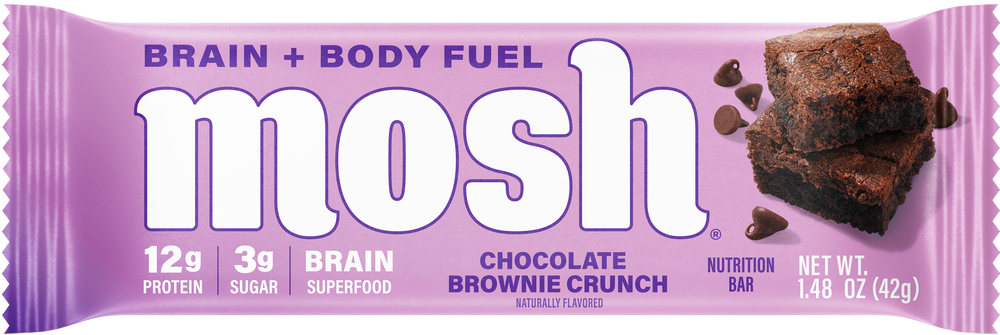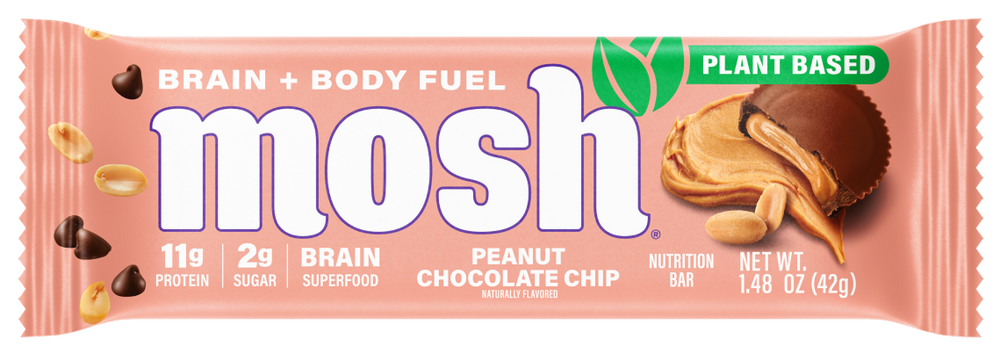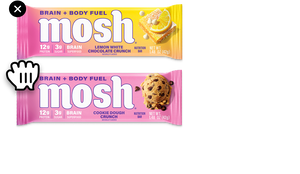There’s sugar in nearly everything you consume, from your morning latte to your afternoon acai bowl. The important thing to remember is that not all sugar is the same — there is both “good” and “bad” sugar.
“Good” sugar generally refers to the naturally occurings sugars you’ll find in whole, healthy foods that also provide essential vitamins and minerals. “Bad” sugar generally refers to highly processed, refined types of sugar you’ll see in junk foods that tend to do a lot more harm than nourishing.
One key to living a healthy life is to satisfy your body’s need for sugar with “good” sugar while keeping a close eye on the amount of “bad” sugar that slips into your diet.
While it sounds easy enough, added sugars have snuck their way into a majority of the food and drinks available to the general population, especially when convenience and indulgence are the primary advertising points.
Why Do Our Bodies Even Need Sugar?
The first thing that needs to be addressed is why sugar isn’t something we cut out in entirety. Sugar molecules (in the form of monosaccharides) are the building blocks for carbohydrates. Carbohydrates are one of three macronutrients (along with protein and fat) that the body needs to carry out its daily cellular processes.
Between 10 and 35 percent of your daily calories should be carbohydrates because carbs are your body’s main source of energy. This is why diets like the keto diet are successful — because while they reduce carbs, they still include carbs, compared to other diets that aim to eliminate this essential macronutrient altogether.
For us humans, glucose is the monosaccharide necessary throughout the body as a primary cellular energy source. As soon as food enters the mouth, the digestion process has begun, working to break food down into its basic chemical components.
Glucose is isolated during digestion, and is absorbed into the bloodstream, where it’s transported into the cells thanks to a hormone called insulin, which is released by the pancreas, and basically serves as the key needed for glucose to enter the cells.
Cellular respiration helps release the stored energy inside of glucose and convert it into adenosine triphosphate (ATP). The cells will then use ATP as a power source to perform their necessary functions.
Any glucose in the bloodstream that doesn’t get used is converted into glycogen, and is stored in the liver and muscle tissues for later use. The glycogen can be converted back into glucose whenever your body needs more energy.
What Are the Different Forms That Sugar Can Take?
If sugar is so important, why does eating too much ice cream make us nauseous while an apple a day is a decades-old recommendation?
It mainly comes down to “natural” sugars versus “added” sugars in our foods, and the implications that each type can have on the food as a whole and what it means for our health.
Natural Sugar
The two most common types of natural sugar are fructose (found primarily in fruits) and lactose (found primarily in dairy).
These types of sugar are considered monosaccharides, or “simple” sugars. This means they only contain one sugar molecule and can’t be broken down any further into a smaller form of sugar.
But being a “natural” sugar isn’t just about being the simplest form of sugar — rather, natural sugar is more accurately described as naturally occurring sugars, which are referred to as “good” sugars because they’re associated with better, healthier foods that tend to contribute to health instead of take away from it.
When you eat foods that contain naturally occurring amounts of sugar in their whole, unprocessed forms, you’re more likely eating whole foods that also come with the vitamins, minerals, fiber, antioxidants, and other nourishing compounds that support your health.
The fiber in these food sources are especially beneficial as it contributes to metabolic health and digestive function in a way that helps your body to better absorb the nutrients you’re taking it, and to more slowly metabolize natural sugars in a way that steadily fuels energy throughout your day instead of spiking you up just to lead to an afternoon slump.
This combination of natural sugar working with other key nutrients like fiber is what makes naturally occurring sugar the more healthful option for providing fuel to your body.
Added Sugar
Added sugar can be naturally derived, and the form of sugar used isn’t necessarily a detrimental risk to your health. The issue with added sugar is the qualifier: added.
Cane sugar is one of the best examples of added sugar, as it’s usually a key ingredient in many types of foods and drinks, but it isn’t necessarily a “bad” form of sugar you should avoid at all costs as soon as you see it on an ingredients list.
However, brown sugar, corn syrup, molasses, honey, and maple syrup are common examples of naturally derived forms of sugar that get added in excess to foods, especially desserts, snacks, and beverages.
Added sugar is the type you need to be most careful about overconsuming.
Unlike naturally occurring sugars, added sugars are usually added in so much excess that even the most foundationally healthy food can become bad for your health.
Yogurt is one example of a food that inherently can be very beneficial for your digestive tract thanks to the probiotics it offers. Unfortunately, as yogurt became more popular, some food companies began to release flavors like key lime pie, strawberry shortcake, or chocolate mousse, which often include heaps of added sugar to make it sweet and more desirable than the fruit-inclusive Greek yogurt next to it on the shelf with no added sweeteners.
On top of that, high fructose corn syrup (HFCS) has skyorcketed in use over the past couple of decades as prepackaged convenience foods have come into increasing demand. While derived from corn starch, a seemingly natural source of sugar, HFCS gets added in an alarmingly excess volume to a daunting proportion of foods and drinks because it’s so cheap to use.
You can get all the sugar your body really needs from the naturally occurring sugars (and carbs) in fruits, vegetables, beans, nuts, and whole grains. Added sugar offers no nutritional benefit, and only works to push you over your maximum daily threshold of sugar consumption.
Ideally, you should limit your added sugar to 36 grams a day if you’re a man and 24 grams a day if you’re a woman.
What About Sugar Alcohols?
Sugar alcohols, sometimes known as polyols, are commonly used as sweeteners and bulking agents. The idea behind sugar alcohols is to provide the sweetness of sugar while reducing or even eliminating the calories.
Some sugar alcohols such as mannitol, sorbitol, and xylitol can be found in nature. Other sugar alcohols such as lactitol, isomalt, and maltitol are derived from natural sugar and manufactured synthetically.
There are some benefits to using sugar alcohols as substitutes for traditional sugar; for example, sugar alcohols typically have fewer calories, aren't linked to tooth decay, and typically won’t cause spikes in blood sugar, which is important for diabetics.
These characteristics allow certain products to be marketed as “sugar-free” even though they technically contain a form of sugar.
Additionally, sugar alcohols can give more texture to food, retain moisture, and prevent browning as the food's heated.
That said, sugar alcohols might not be the solution that they were intended to be. Eating too much sugar alcohol may have adverse side effects; bloating and diarrhea are potential outcomes, and it’s also been reported that sugar alcohols can lead to weight gain and water retention.
If you want to use sugar alcohols as a substitute for traditional sugar, it’s generally recommended to do so only in moderation.
What About Artificial Sweeteners?
Artificial sweeteners took the concept of sugar alcohols one step further. Instead of creating a new substance from sugars found in nature, artificial sweeteners are created synthetically in a lab.
There are currently five artificial sweeteners approved by the FDA: acesulfame, aspartame, neotame, saccharin, and sucralose. Each sweetener has some unique characteristics, but they largely serve the same purpose and are used in the same applications.
The main benefits offered by artificial sweeteners are that they contain no calories and don’t contribute to tooth decay. Sugar alcohols might boast a slightly smaller calorie coin than traditional sugar, but artificial sweeteners have absolutely no caloric contributions and basically pass through your body undigested and unprocessed.
Another highly sought-after quality of artificial sweeteners is that it only takes a tiny amount to significantly sweeten something.
Ironically, one of the artificial sweeteners' best qualities is simultaneously one of its worst. An artificial sweetener can easily reach several hundred times the sweetness of traditional sugar. The problem is that the intense sugar rush can become highly addicting, training your brain to crave sweeter and sweeter foods over time.
How To Reduce Your Consumption of Added Sugars
Added sugar hides in foods you would probably never even consider — from teas to condiments to bread, it might take a little bit of hard work and a keen eye for details to better manage your added sugar intake. Here are a few tips to help.
1. Start By Making Healthy Swaps for Most Obvious Sources of Added Sugars
The first step is the easiest and most obvious: cut out the obvious culprits.
Soft drinks, energy drinks, sports drinks, desserts, candy, and sweet snacks are all loaded with added sugar and offer virtually no worthy nutritional value. The occasional indulgence is fine (after all, we’re human), but consuming these types of products regularly isn’t doing any favors for your health. Not to mention, the lack of nutritional value in junk food may be contributing to more sugar cravings in a vicious cycle.
While you don’t have to turn to carrots and hummus as your everyday snack for the rest of your life, opting for a brain and body-fueling protein bar as your afternoon pick-me-up in place of that cupcake can go a long way toward more balanced nutrition.
2. Read Every Nutrition Label and Ingredient List
Sugar sneaks into many common foods you encounter daily. You might not be surprised to learn that sugar is in most breakfast cereals, but it might be a shock to learn that copious amounts of added sugar are in the organic salad dressing you’re using to top your lunch, or in the size large iced latte you regularly order from your favorite drive-thru coffee joint.
The best way to avoid eating excess added sugar is to review the nutritional label of every food and beverage that you consume, even the ones that you wouldn’t think contain added sugar.
Be on the lookout for the “added sugar” line in particular, and familiarize yourself with the different forms of sugar that may be listed on the ingredient list — high fructose corn syrup, corn syrup, cane sugar, honey, and agave syrup can all contribute to excess consumption of added sugar, even though they may be naturally derived or present in a “healthy” or “organic” marketed product.
3. Get Creative With Your Own Recipes
Adding sugar to a meal isn’t exclusive to food manufacturers. It’s easy to forget the sugar content when you’re trying to adjust the flavor of your own cooking. It can be tricky to cook some of your favorite meals if you have to be mindful of the sugar or carb content.
Ideally, you can start slowly by only using half the recommended sugar of the recipe, or by swapping out traditional sugar for alternative sweeteners like monk fruit or stevia.
When it comes to adding sauces, you’ll need to commit to the first item on this list and ensure you’re choosing soy sauce with minimal added sugars in order to sugar-optimize your homemade dumpling sauce.
The most important thing is that you increasingly work to become more conscientious of what you’re adding to your meals and incorporating as ingredients, especially when it comes to sauces, drizzles, and dips.
4. Opt for Foods and Drinks with Natural Sugars When You Can
The last part might be the most challenging of all the steps. You will need to increase the amount of natural sugar you eat by opting for the whole food alternatives and sugar-mindful brands when you can.
It might sound counterintuitive, but eating more natural sugars can help you eat fewer added sugars.
For example, fruit could become your new go-to dessert or afternoon snack. You’ll cut back on the added sugars, feel fuller for longer, have better control over your blood sugar levels, and actually provide your body with nourishment instead of empty calories.
The Bottom Line: Opt for Naturally Occurring Sugars, Try Your Best To Avoid Added Sugars
While sugar has gained a bad reputation, it’s actually necessary for health, as long as it’s consumed in the right forms and the appropriate quantities.
To move away from added sugar, you’ll have to cut down on some of your favorite snacks and indulgences, review every food label, get creative with recipes, and opt for healthier alternatives made with naturally occurring sugars instead of sugar that’s been added in excess.
One easy step you can take right now? Order a trial pack of MOSH bars as your first official no-added-sugar swap.
While many protein bars contain added sugar to make them more palatable, MOSH bars are deliciously good for you, offering brain-fueling nutrients like ashwagandha and vitamin B12, delivering up to 13 g of protein per bar, and keeping sugar content to just 1 g per bar tops, no added sugars in sight.
Sources:
Artificial Sweeteners and Other Sugar Substitutes | Mayo Clinic
Sugar Alcohol | Yale New Haven Hospital
Added Sugar | The Nutrition Source | Harvard School of Public Health
Monosaccharides | ScienceDirect Topics
Liver Glucose Metabolism in Humans | PMC
Blood Sugar | Blood Glucose | Diabetes | MedlinePlus
Carbohydrates 101: The Benefits of Carbohydrates | Reid Health
What are Carbohydrates and Sugar? | Sugar Nutrition Resource Centre
Why it's So Hard to Kick Your Sugar Habit | CNN
What You Should Know About Sugar Alcohols | Cleveland Clinic
8 Artificial Sweeteners That Make You Crave More Sweets | Children’s International Pediatrics.


























